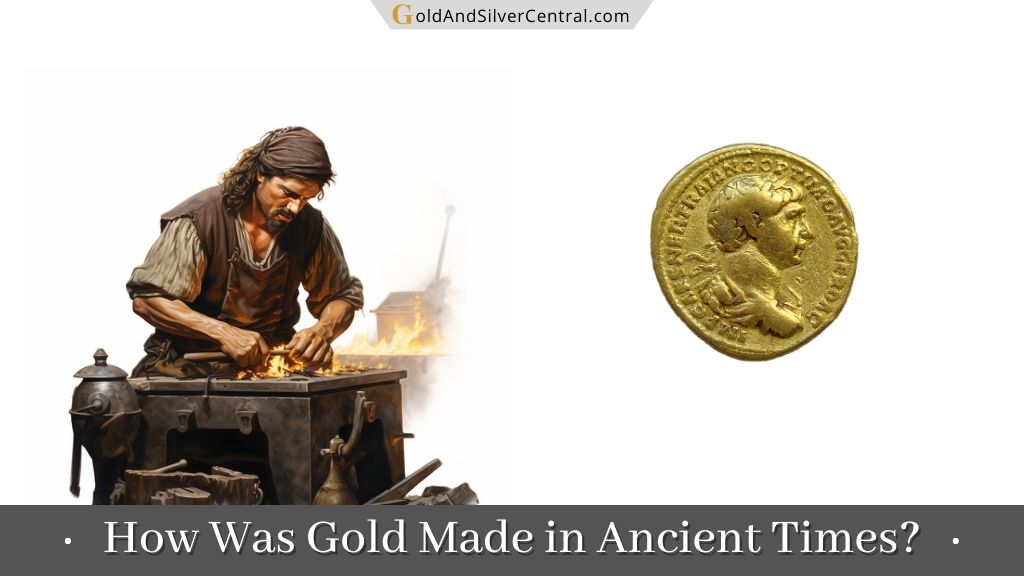Let’s face it:
Gold has captivated civilizations throughout history, totally hypnotizing humans with its shine and its worth. That’s why ancient folks saw gold as the top symbol of wealth, power, and even godliness.
But ever wonder how they made this precious metal back then?
Today, we will discuss the mysteries of gold’s origin and the processes by which it was formed in ancient times.
Ready to dig in?
Gold’s Natural Formation
This precious yellow metal, that glowing symbol of wealth and beauty, didn’t just pop into existence — it’s the result of incredible natural processes over millions of years.
Its origin lies deep within the Earth’s crust, where a complex interplay of geological forces sets the stage for its creation.
Gold usually forms in hydrothermal systems, where hot fluids mix with rocks.
These fluids, rich in minerals and metals, circulate through fractures in the Earth’s crust, carrying the building blocks of gold.
One of the main ways this metal is made involves volcanoes. When a volcano erupts, it pushes these fluids toward the surface.
As the fluids get close to the surface and interact with minerals and rocks, they dissolve and carry tiny gold particles, gradually accumulating in cracks and cavities.

Now, as these fluids cool off and the pressure drops, the gold-laden fluids go through some chemical changes.
This causes the gold particles to fall out and settle in the cracks within the rocks. These veins of gold, often mixed with quartz or other minerals, are what miners hit up when treasure hunting.
In addition to this volcano-inspired method, Mother Nature has other tricks up her sleeve.
Placer deposits, for example, result from the erosion of gold-bearing rock. Imagine rivers and streams acting like giant conveyor belts, carrying sediments downstream.
The heavy gold particles drop off in places where the water slows down, like riverbeds or at the foot of mountains. And voila! That’s how we get those cool yellow nuggets.
All the conditions needed to form this precious metal are pretty precise. It’s all about having the right temperature, pressure, fluids, and host rocks.
That’s why gold is pretty rare in the Earth’s crust and why finding it is such a big deal.
So, thanks to nature working its magic for millions and millions of years, we get these awesome goodies brought from deep down in the Earth to the surface, ready for us to dig up and cherish.
Ancient Gold Mining Techniques
Looking for this precious metal was a serious business for our ancestors, and they devised clever ways to find it.
Whether it was in calm riverbeds or on the side of a rugged mountain, they were on it.
So, let’s check out some of these cool ancient mining techniques that let people dig up all that hidden gold.
Placer Mining
This is old-school gold hunting.
People would sift through the loose mineral in riverbeds or alluvial deposits. They’d use pans or wooden plates, scoop up some dirt, and gently swirl it around.
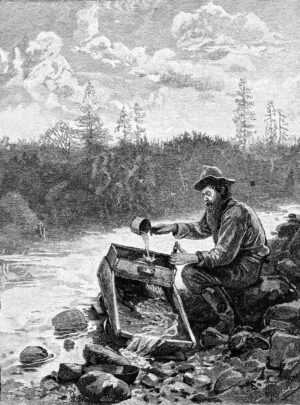
The light materials would wash away, leaving the heavier gold particles.
This process, known as panning, required skill and patience but was highly effective in recovering significant amounts of gold.
Sluicing
This is a bit more sophisticated but still super effective.
Here, miners would use a long, tilted box called a sluice box. They’d redirect some water from a river or stream through the box.
The water would wash away the lighter dirt, and the heavier gold particles would settle into ridges in the box. Then, they could scoop out the gold.
Rocker Box
Also known as a cradle, the rocker box was a big hit with gold miners back in the day. It was a wooden box set on rockers so it could move back and forth, like a baby’s cradle.
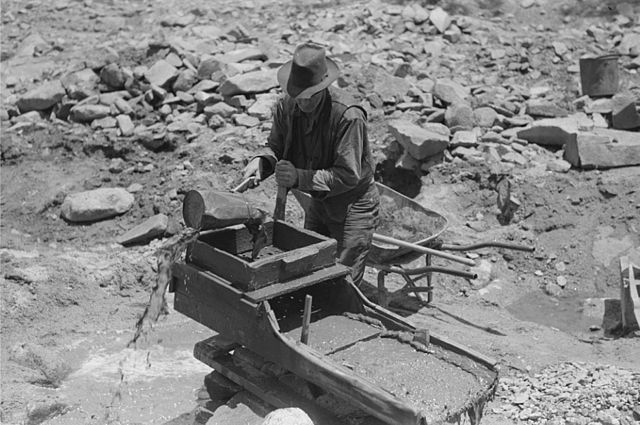
Miners would shovel dirt and gravel into the box, and the rocking motion and water would wash away the lighter sediments, leaving the gold trapped behind some riffles at the top.
Dry Washing
For places where water was hard to come by, this method was the way to go. Miners would use a special machine called a dry washer to blow air and shake up the dirt or gravel.
The light materials would get blown away, and the heavier gold would fall onto screens or riffles for collection.
Underground Mining
As time went on, people started to get even more inventive with their mining. For gold deposits buried deep down, they’d dig tunnels or shafts to reach the gold.
Using picks, hammers, and chisels, they’d break out the gold-bearing rock and then process it to separate the gold from the rest of the minerals.
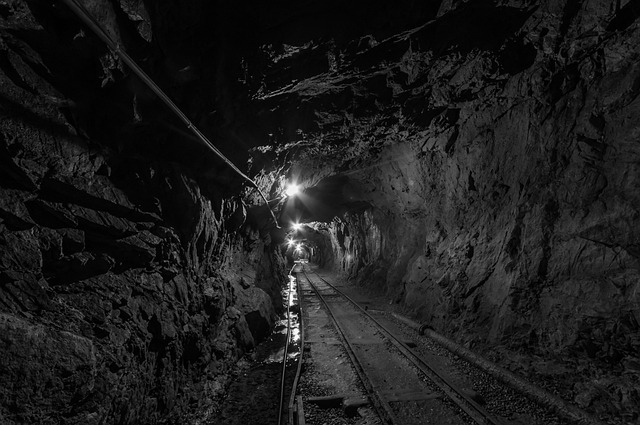
So, as you can see, our ancestors were ingenious when finding gold. It’s no wonder that gold has played a big role in human history!
Extraction and Refining Processes
After ancient people dug up all that shiny metal, they had to figure out how to clean and prepare it for use. They had to break up the rocks, get the gold out, and remove any impurities.
Let’s see how they did it:
Crushing and Grinding
It all started with some good old-fashioned elbow grease. Using stone hammers or pestles, ancient miners had to smash up the gold-bearing rocks into small pieces.
The idea was to increase the surface area of the ore so they could get at the gold more easily.
Amalgamation
So once they had their rock all crushed and ground up, they mixed the powder with mercury. Yeah, you heard right, mercury. It sounds dangerous, but it was effective.
The gold would bond with the mercury, creating this compound that was easier to separate from the rest of the minerals in the ore. Especially the tiny gold particles that could’ve been missed otherwise.
Smelting
Now the smelting was the next big step. Here, miners aimed to separate the gold from the rest of the impurities.
So, they’d heat the gold-mercury mixture, causing the mercury to evaporate and leave behind the gold.
This needed some serious control over temperature and airflow — you wouldn’t want to lose any of that precious metal!
Cupellation
Up next was this ancient process called cupellation, where they’d take the gold from smelting and put it in a cupel (a kind of dish made from bone ash or something similar).
The cupel was then heated, causing the remaining impurities to separate from the gold.
It was like a super-gold detox, you could say.
Parting
Lastly, they had this neat trick to separate gold from other precious metals like silver.
They would dissolve the alloy in nitric acid, which would selectively dissolve the silver and leave behind the gold — kind of like giving the gold a bath and scrubbing off all the silver.
What’s cool is that these ancient techniques became the building blocks for modern gold extraction and refining methods.

The spirit of innovation from these early gold seekers still shines in today’s gold industry. Amazing how far we’ve come, isn’t it?
Using Technological Advancements
It’s not news that we’re all a little obsessed with gold.
I mean, people have been chasing after this shiny metal for centuries! And over time, they’ve devised many impressive ways to dig and refine this metal.
Let’s take a look at how ancient societies leveled up their gold game:
Improved Mining Tools
As people got smarter, so did their tools. Those ancient miners developed better versions of their picks, shovels, and hammers.
Not only were these tools stronger, but they were also more efficient, making it easier to dig deeper, hit harder rocks, and boost their gold-finding game.
Water-Powered Mining
People started to use the power of water to their advantage. They came up with smart ways to use flowing water to get at the gold in riverbeds and alluvial deposits.
Imagine canals, ditches, and sluices that moved water around to wash away sediment and uncover the gold-rich mineral underneath. Talk about making a splash!
Fire-Setting Techniques
Have you ever tried to get a stubborn lid off a jar?
That’s what ancient miners were dealing with but with hard rocks instead of jars. They’d heat the rock face with fire, then cool it down quickly with water.
This caused the rocks to fracture, making it much easier to get at the yellow goods inside.
Improved Extraction Processes
Humans got really good at getting gold out of rocks and minerals.
They fine-tuned the way they crushed and ground up the ore, which made it easier to release the gold particles.
All this led to higher gold yields and more efficient extraction overall.
Furnaces and Smelting Techniques
This is where things really heated up.
People started using advanced furnaces that could reach higher temperatures, making it easier to separate gold from impurities.
They also developed better smelting techniques — like blowpipes and bellows — to control the air supply and make the process more precise and efficient.
Alchemical Knowledge
Don’t forget the ancient alchemists—they played a huge role in these tech advancements.
They experimented and learned more about chemical reactions and refining processes, which helped them extract and refine gold in more controlled ways.
The cool thing is that these ancient breakthroughs are why we can extract and refine gold so efficiently today.
They laid the foundation for the mining and refining practices we use now and shaped the gold industry as we know it.
Final Words
Now you know how did the ancients get gold.
It’s just amazing how much our ancestors accomplished in the pursuit of this precious metal.
Their knack for innovation, creativity, and their grasp of technology totally changed the game when it came to mining and refining gold.
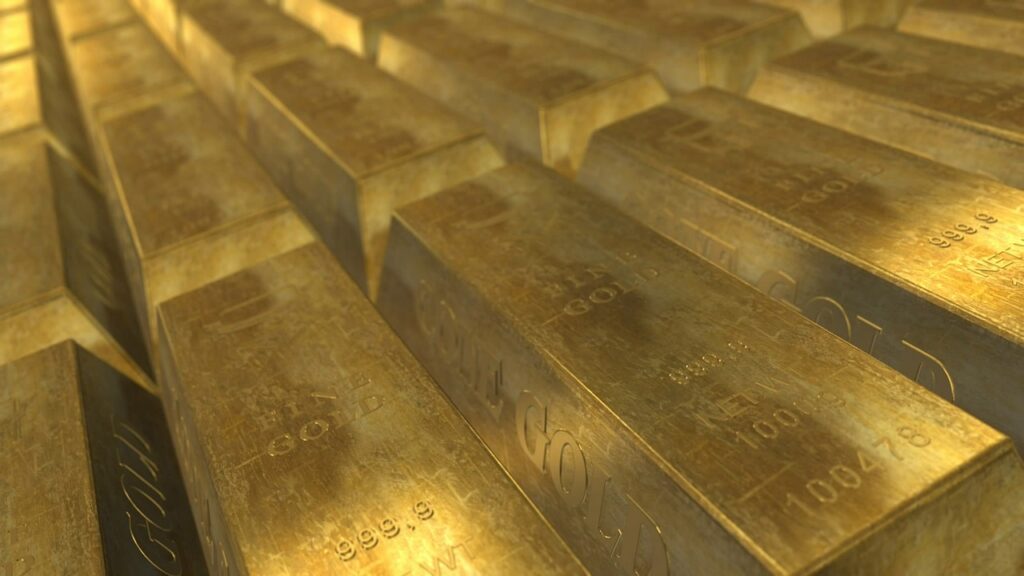
Our ancestors’ methods set the groundwork for our modern gold mining industry.
All the things they discovered through centuries of trial and error have helped make our current mining and refining processes what they are.
And let’s be honest; we’re just as crazy about this yellow metal now as our ancestors were.
We wear it as jewelry, stash it away as a secure investment, and admire its historical and cultural significance. Gold is, and always will be, a big part of our lives.
But gold’s role isn’t just ornamental. Now, you can use this precious metal to hedge against economic downturns.
Curious?
Whether you fancy holding onto physical coins or are considering to buy them in an IRA, check out our #1 recommended Gold IRA company in the US, Augusta Precious Metals.
They will help you diversify your portfolio with gold and silver.
And guess what? They make it as easy as pie, are there for you every step of the way, and will handle 95% of the paperwork with you.
Just call the team at Augusta at 833-989-1952 and learn more about how they can help you.
You can also grab their guide here and get a FREE GOLD coin when you open a gold IRA account with them.

